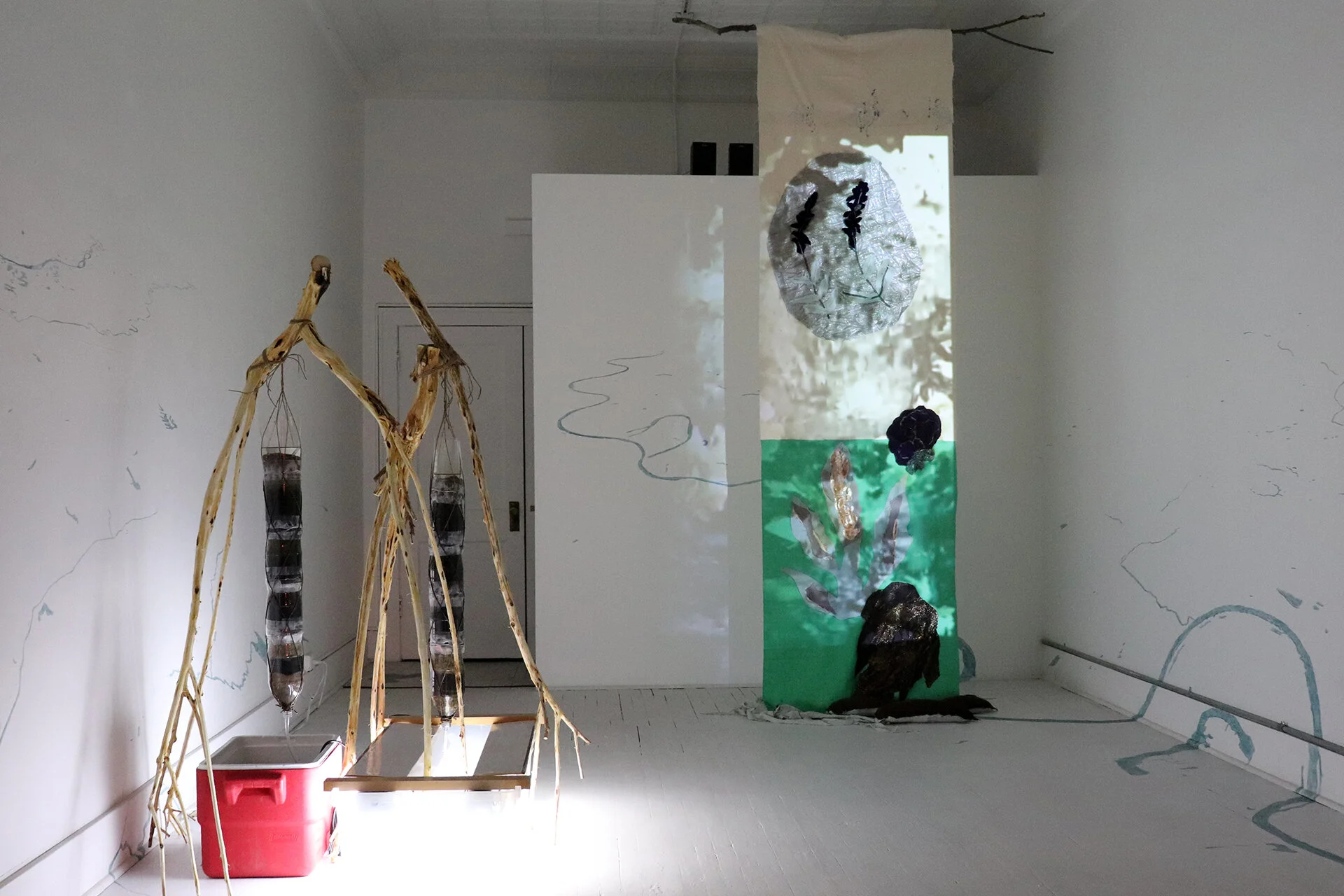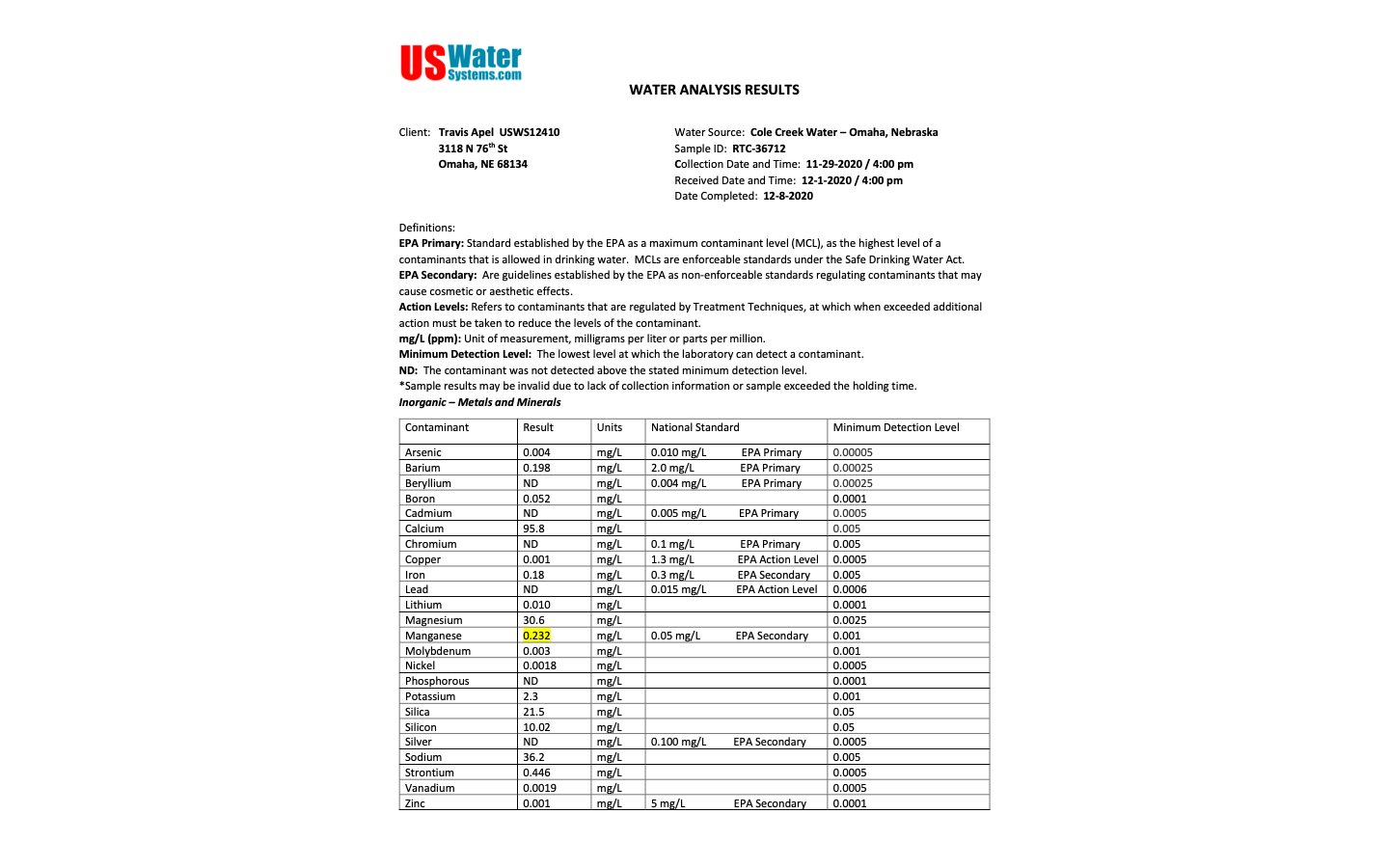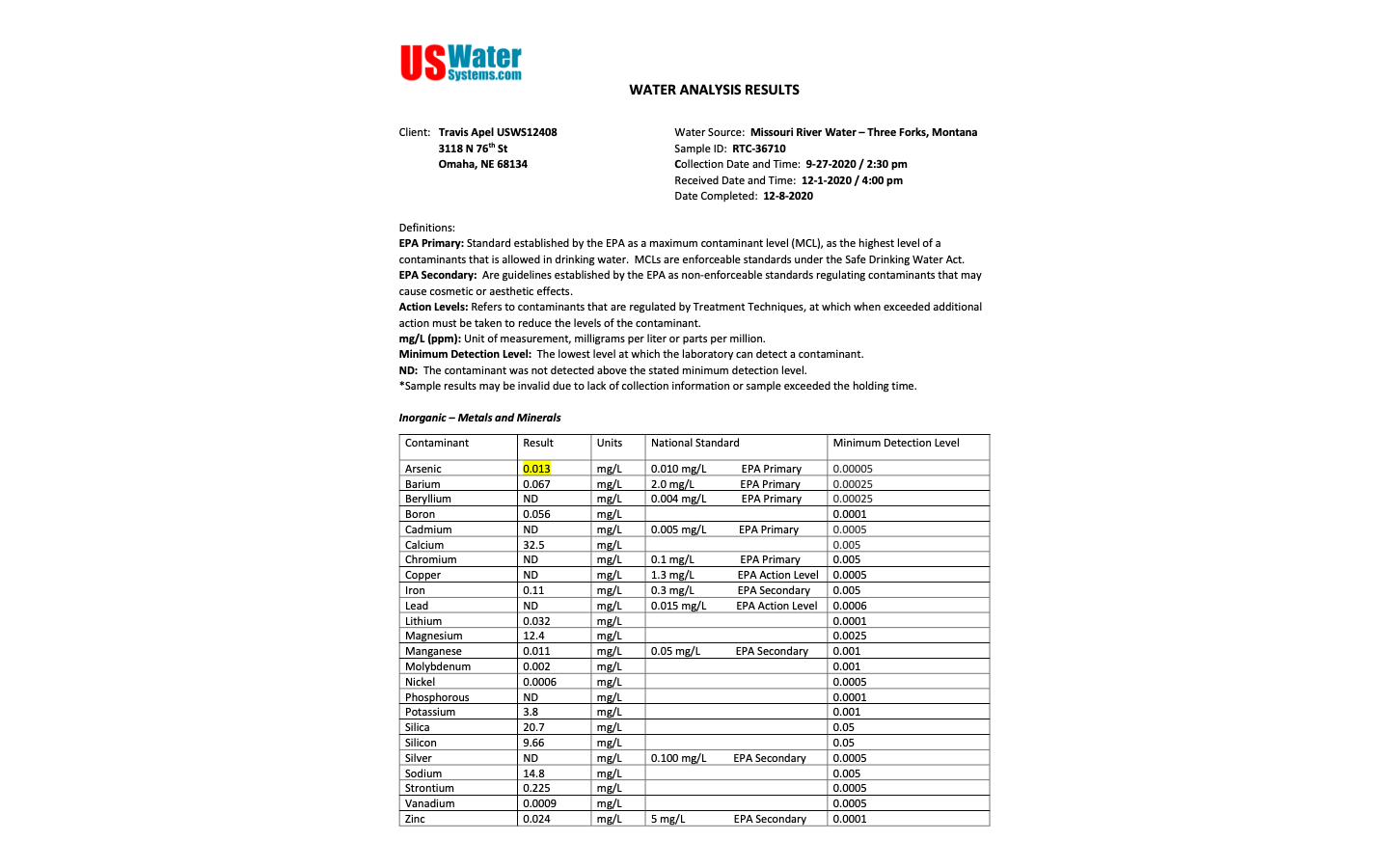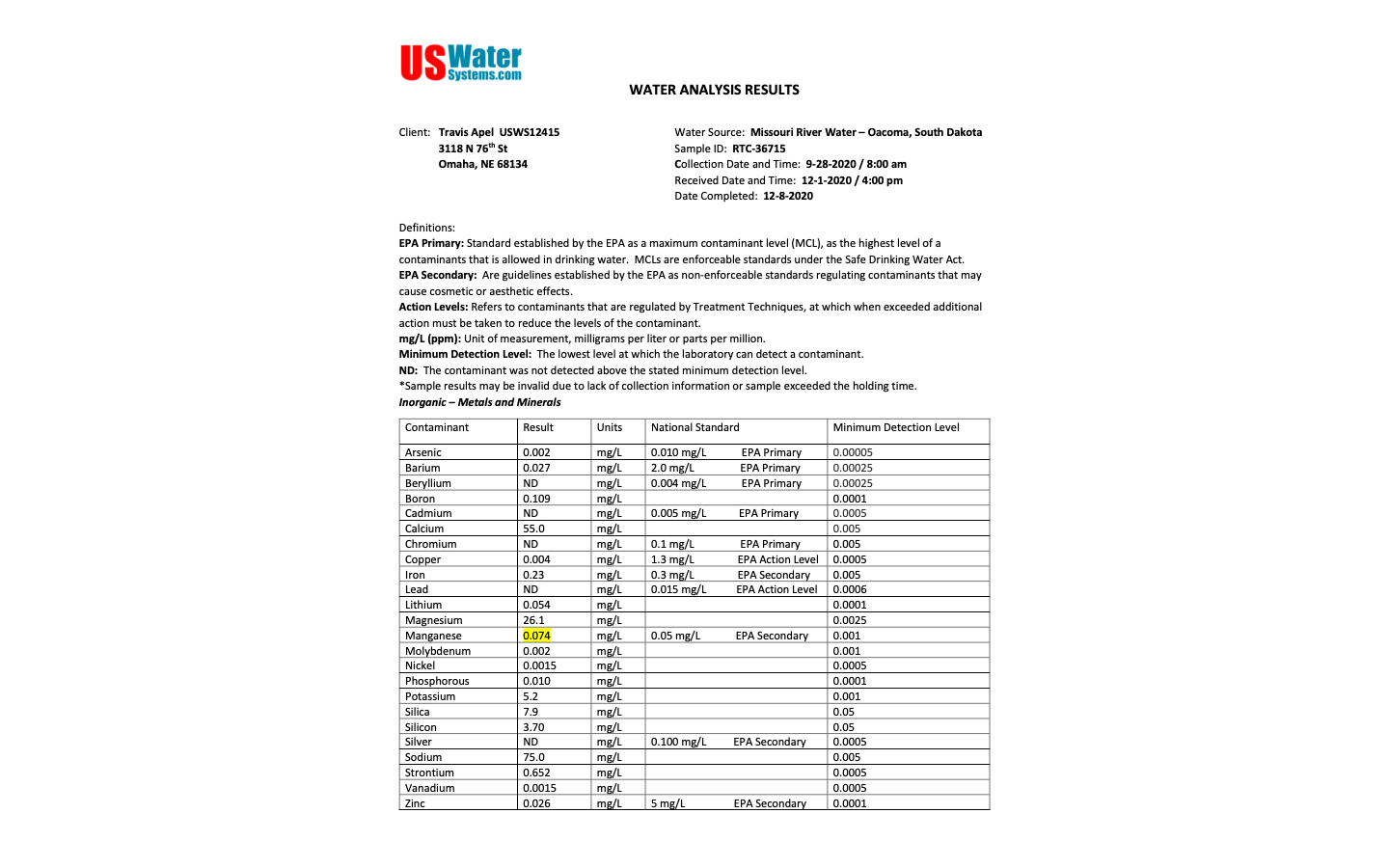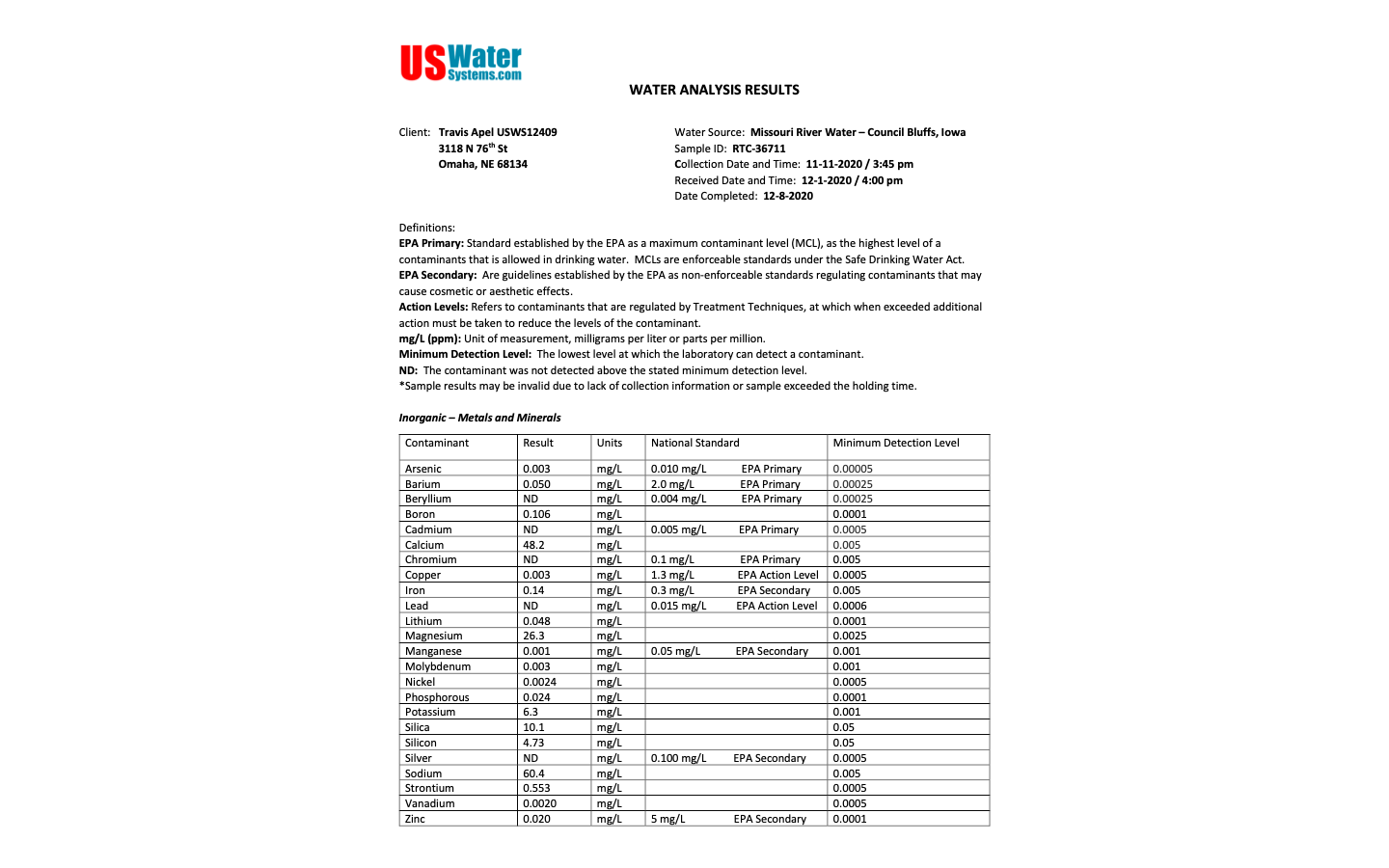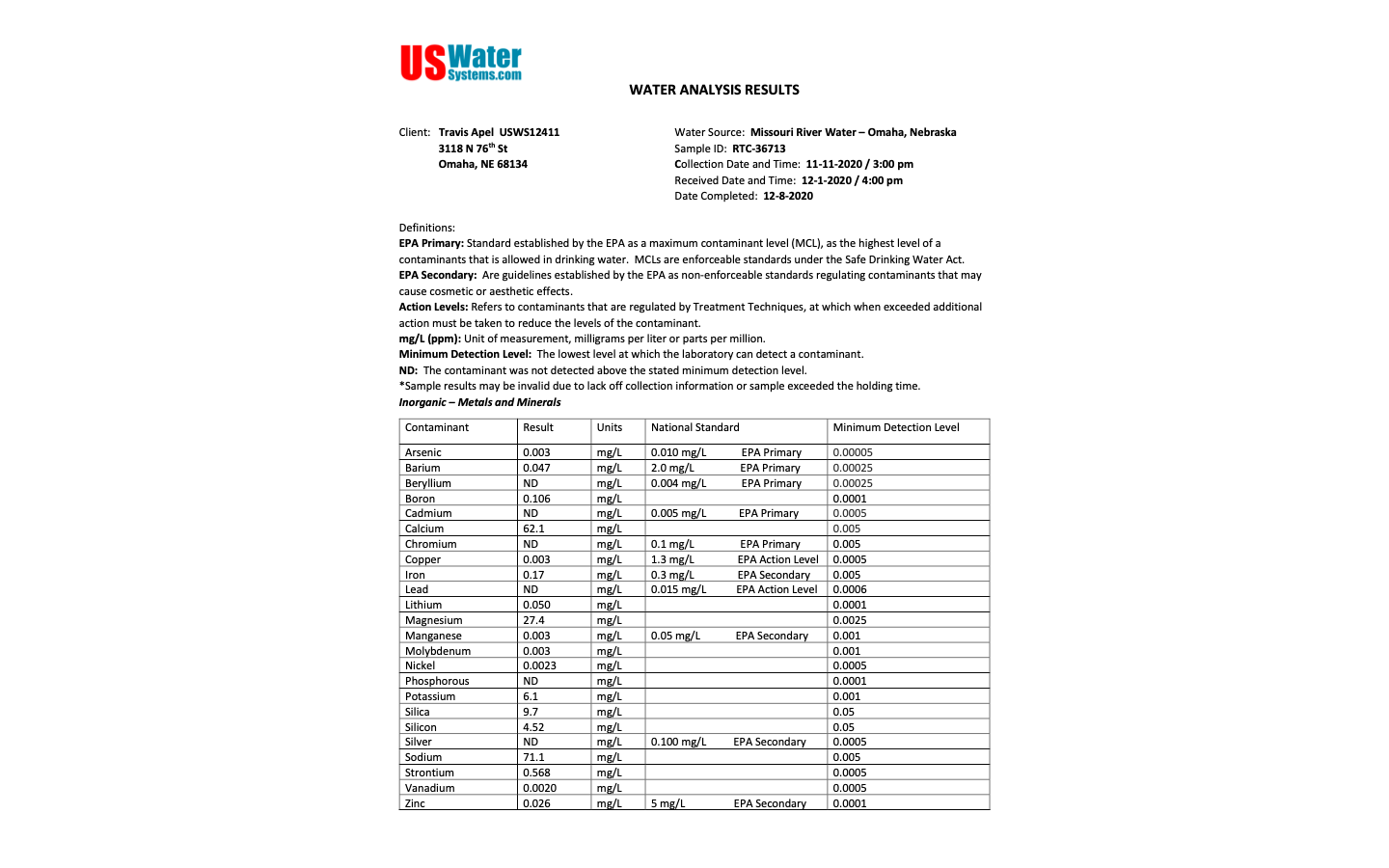Ebb, Flow
2020 ALTERNATE CURRENTS WORKING GROUP EXHIBITION
DECEMBER 11TH, 2020 - JANUARY 1ST, 2021
In 2016, chants of mni wičoni (mini we-cho-nee) echoed through the Standing Rock Reservation in North Dakota. Translated from the Lakota, “water is life” signaled Indigenous North American peoples’ ongoing resistance to Energy Transfer Partners’ Dakota Access Pipeline that threatened, and continues to threaten, the region’s watersheds. Standing Rock focused the nation’s attention on hydraulic fracturing practices that capriciously exploit massive amounts of water, draining aquifers faster than they can recharge, lowering water tables until wells go dry, drawing off rivers and streams, increasing levels of toxicity, and destabilizing soils.
Politically, Standing Rock exemplifies a familiar privileging of corporate agendas, abetted by the United States government across sovereign tribal lands, over the health and well being of people and ecosystems. Extractive industries’ keen fixation on deregulation and privatization that creates conditions of scarcity, eclipses socio ecological consequences, and exacerbates the potential for conflict was justly met with acts of resistance, intervention, ceremony, and song.
Ebb, Flow, Amplify’s 2020 Alternate Currents Working Group exhibition, examines similar modes of cultural production and self-determination that stand up for nature and more specifically, water. Corson Androski, Travis Apel, Erin Foley, Dawaune Lamont Hayes, Rynn Kerkhove, Alex O’Hanlon, Thalia Rodgers, Sarah Rowe, Angie Seykora, and Molly Toberer put forth propositions and extend invitations to understand water outside of capitalist frameworks as autonomous, intimate, and intrinsic. From homemade filtration systems, to collective actions, to relational exercises designed to reveal complex webs of human and other-than-human interdependencies, the project-specific works in Ebb, Flow move water politics beyond distribution and access to collaborative acts of reciprocity, healing, and care.
Virtual Generator Grant programming is presented with generous support from the Nebraska Arts Council and the Nebraska Cultural Endowment.
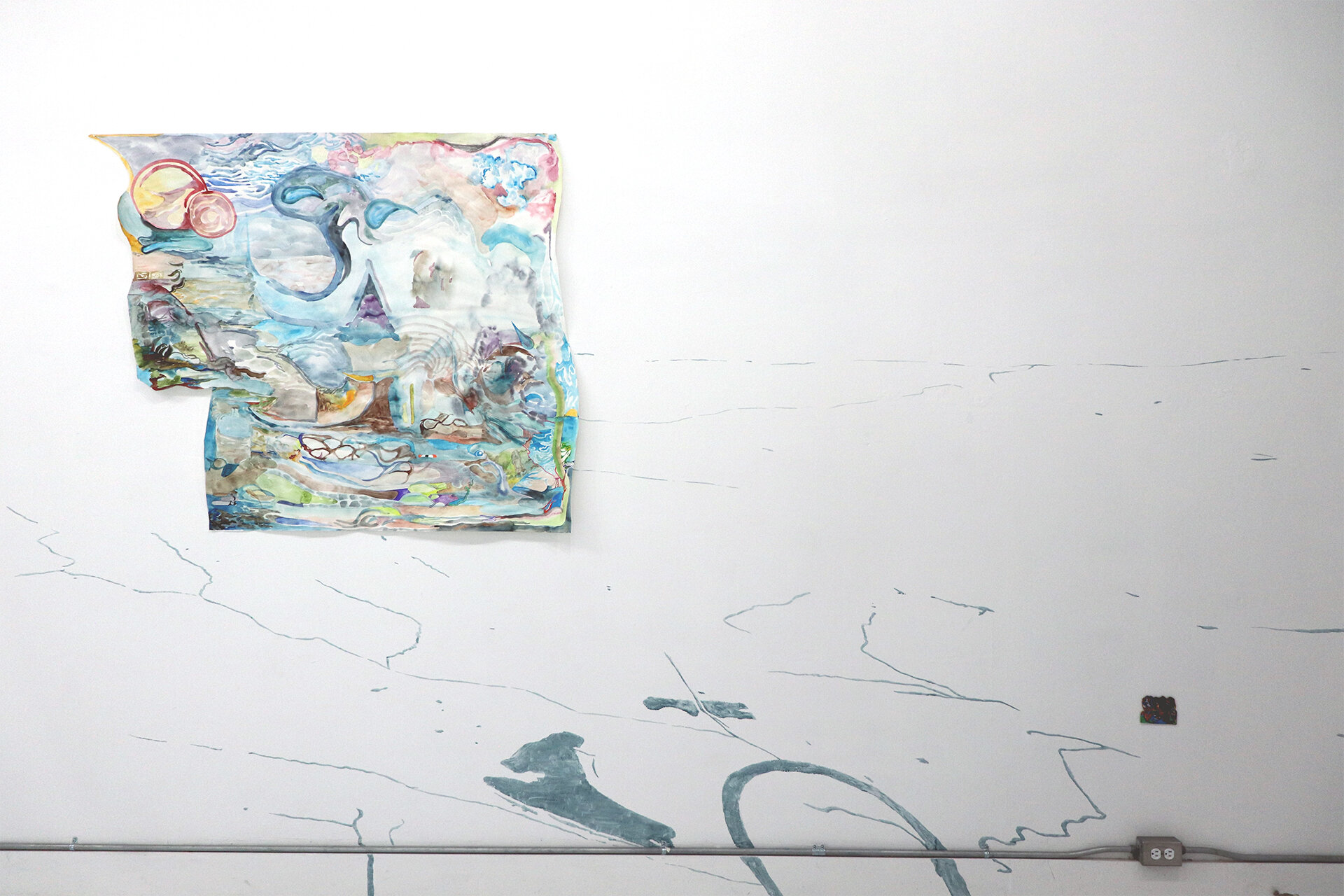
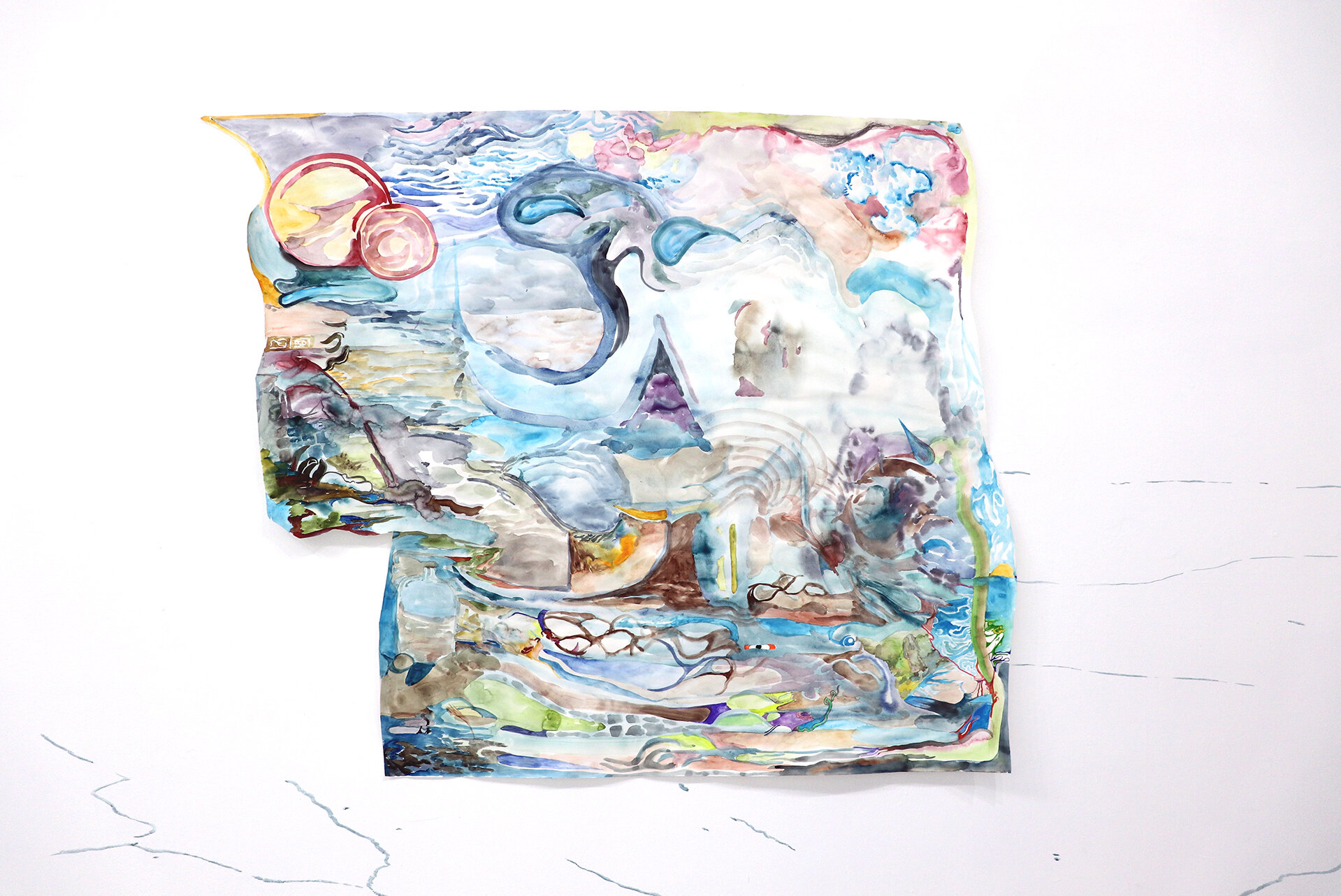
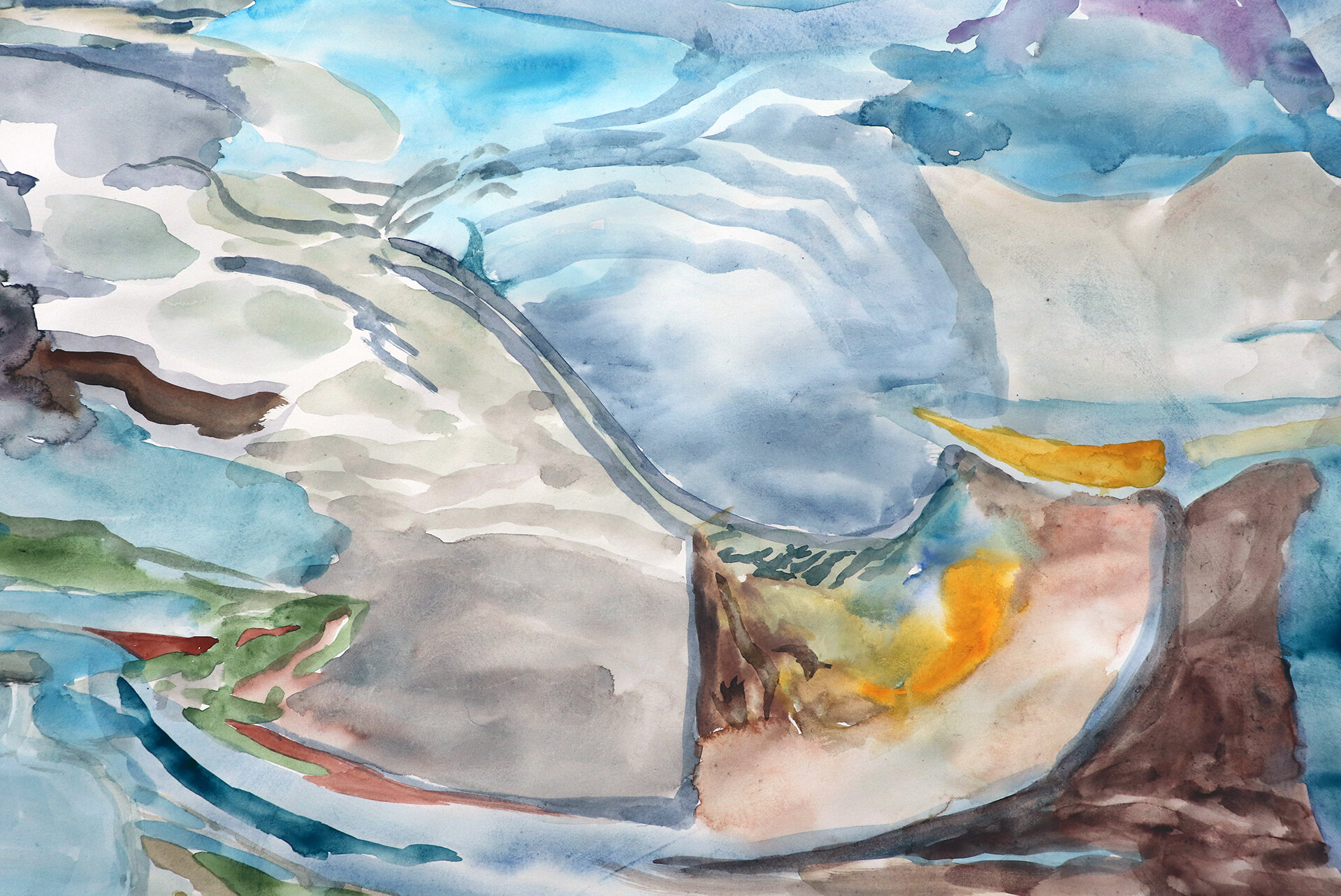

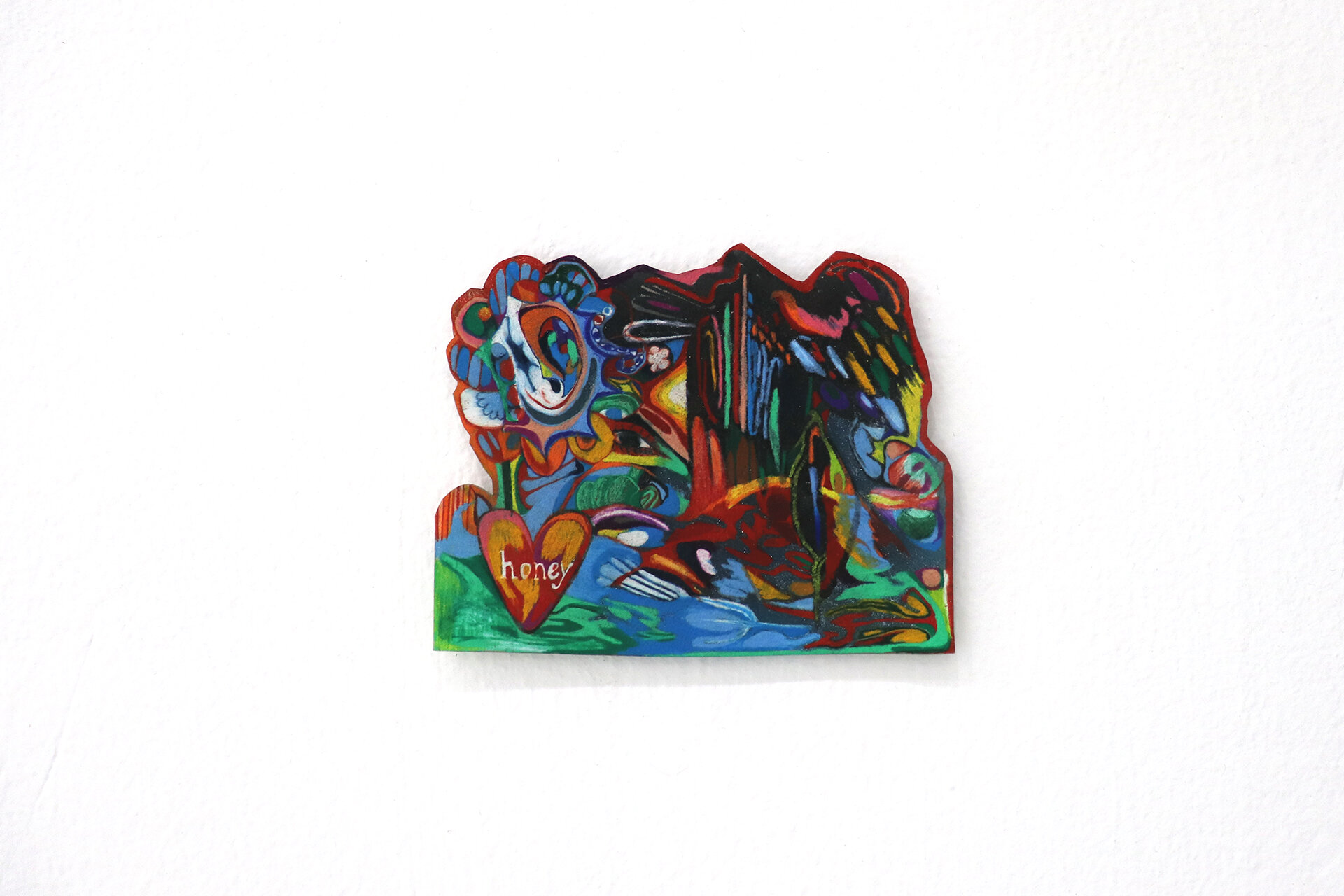

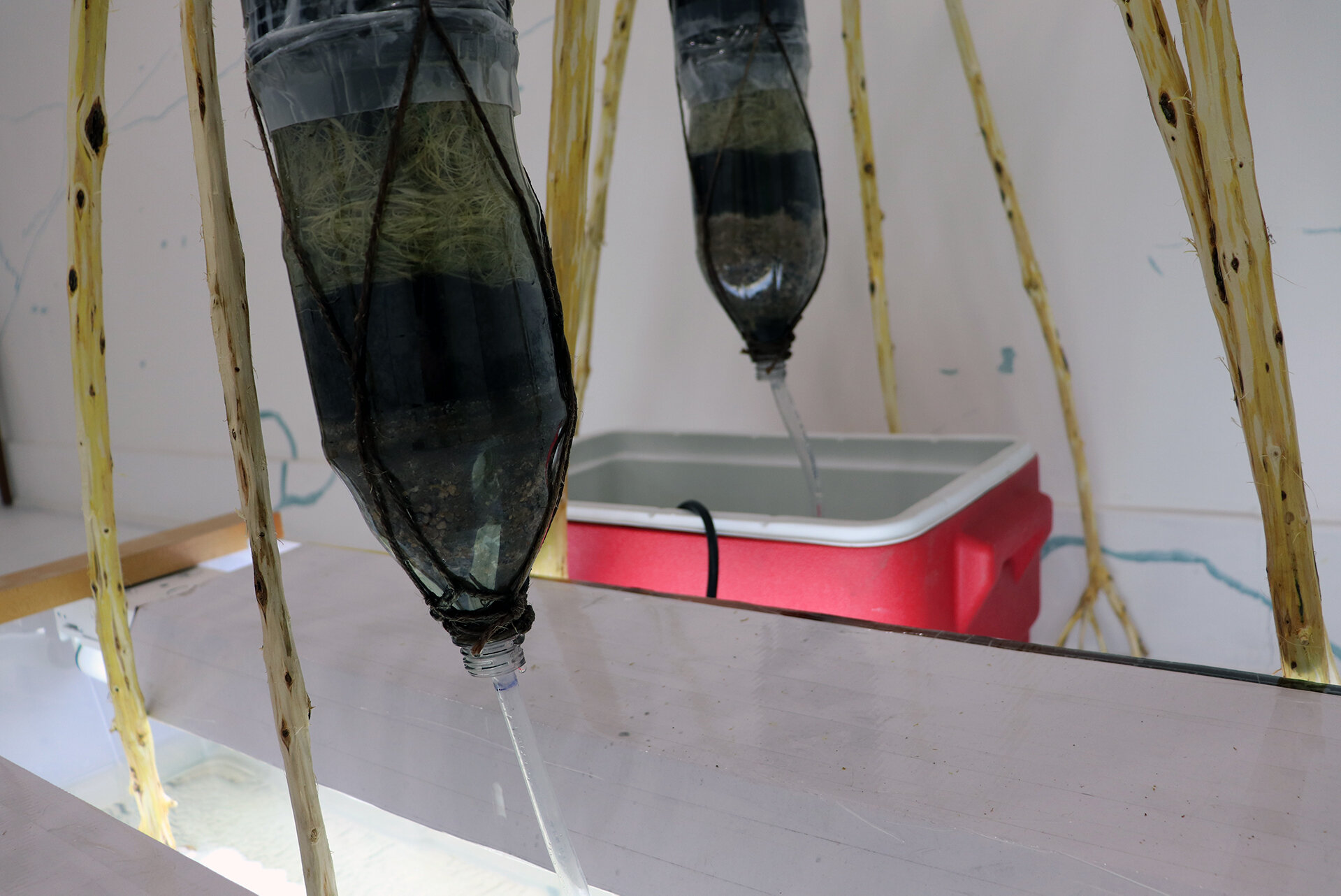
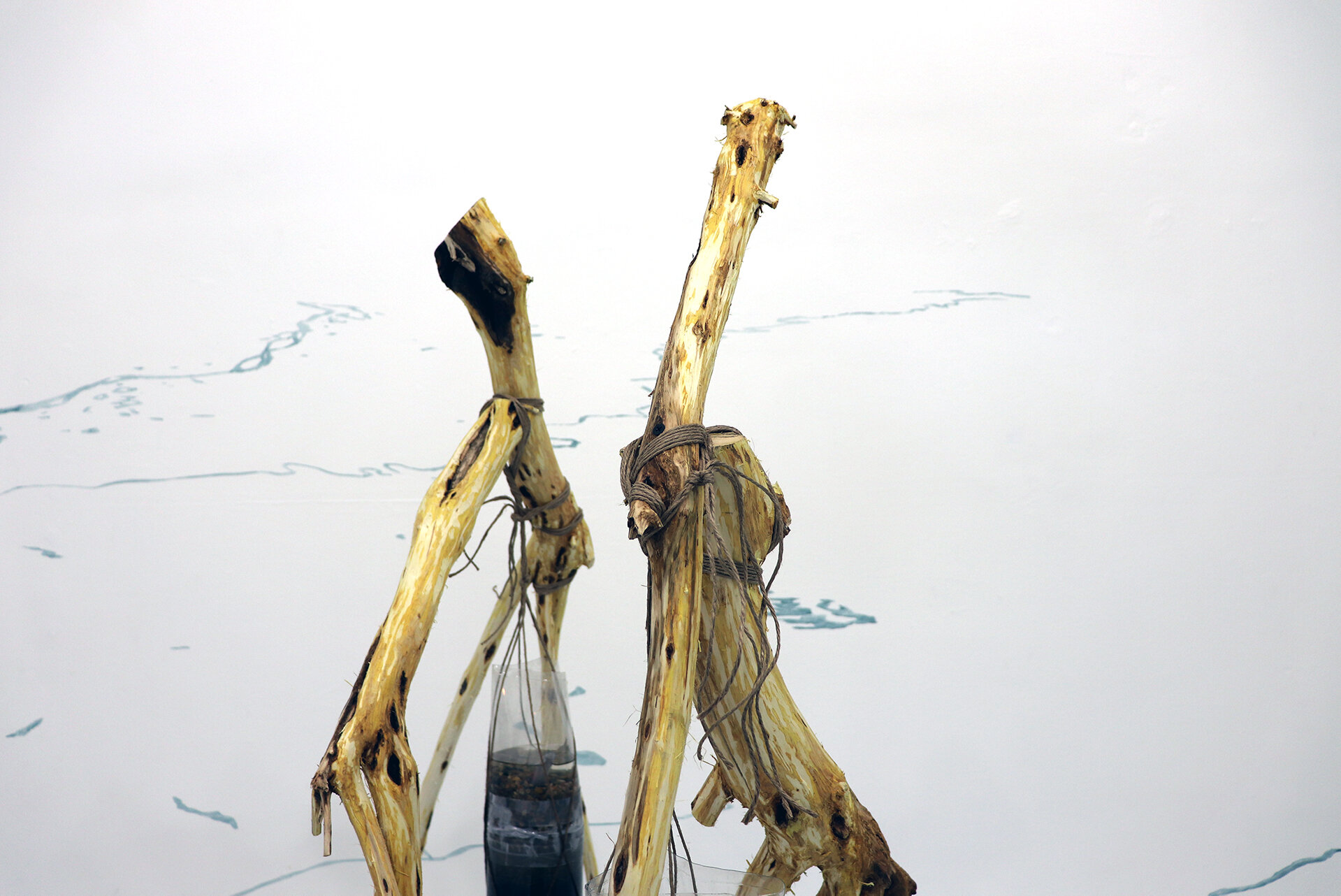
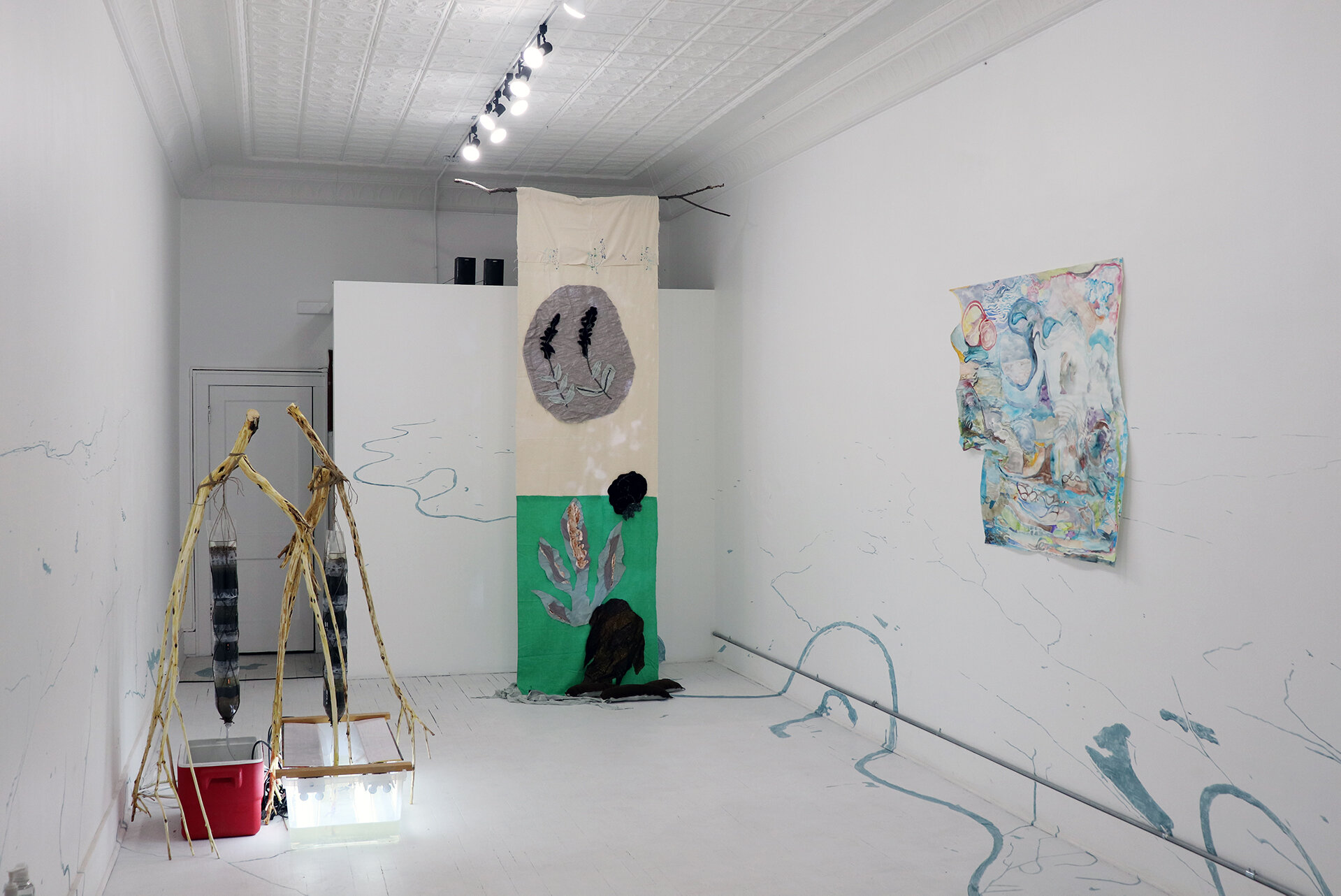


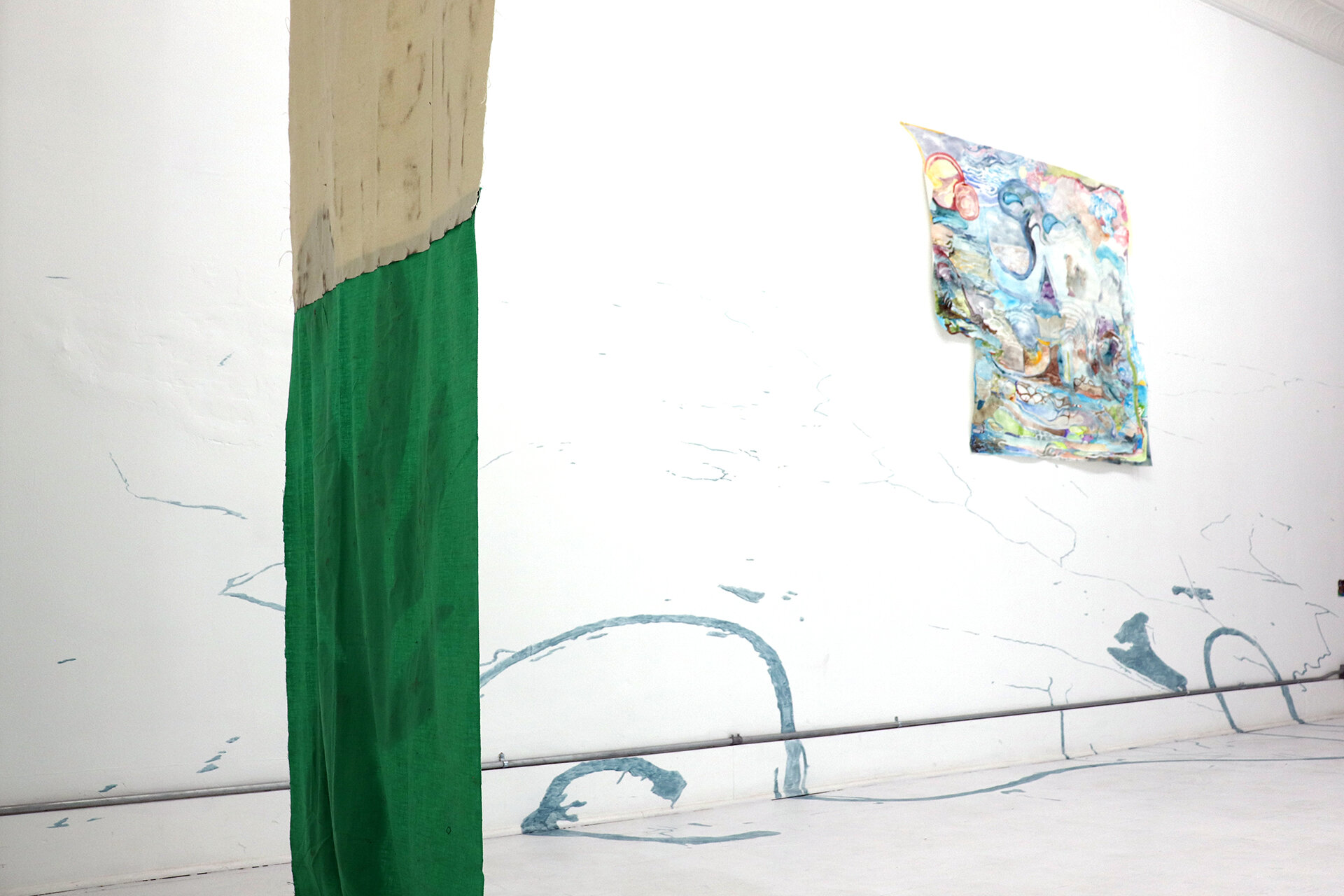
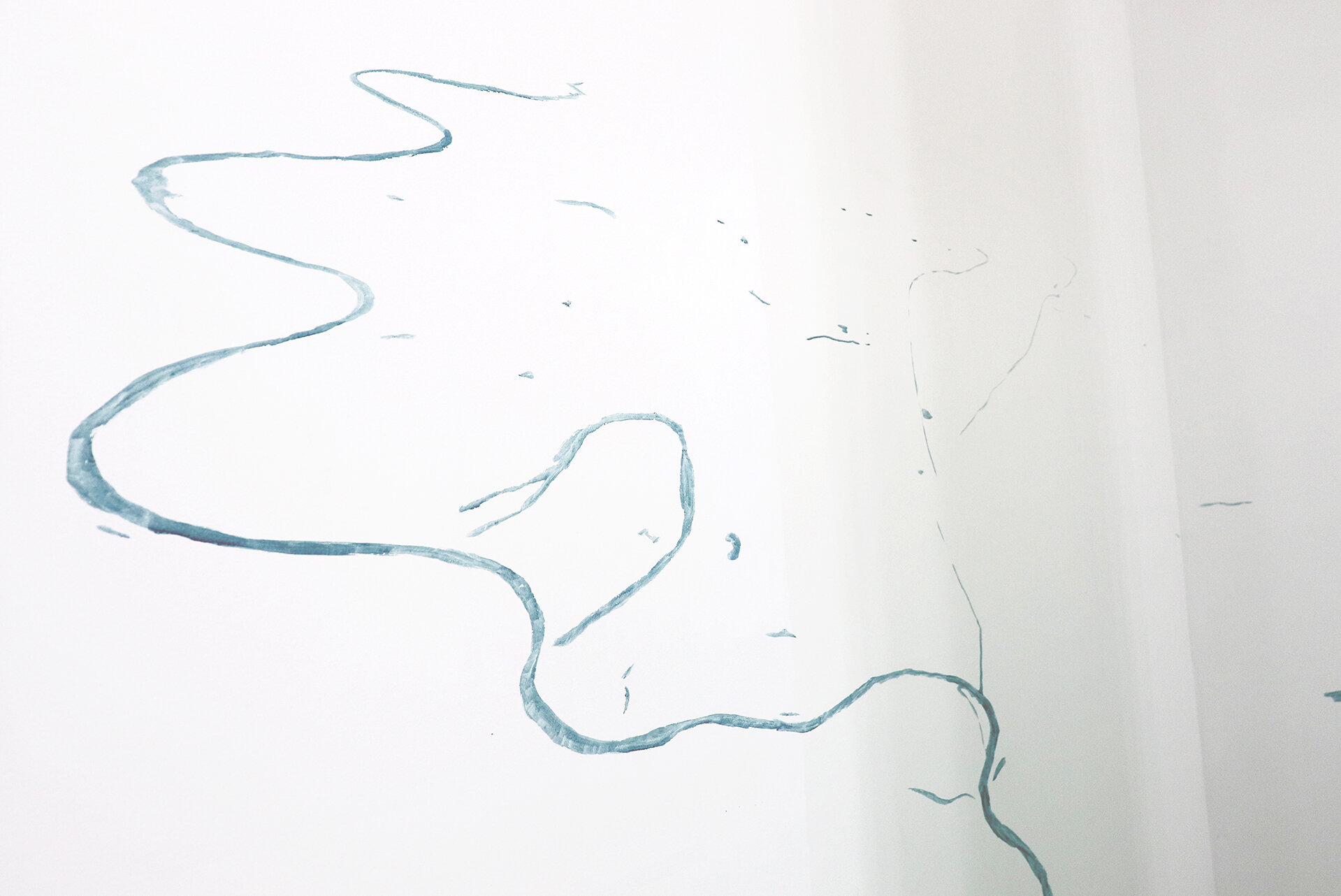
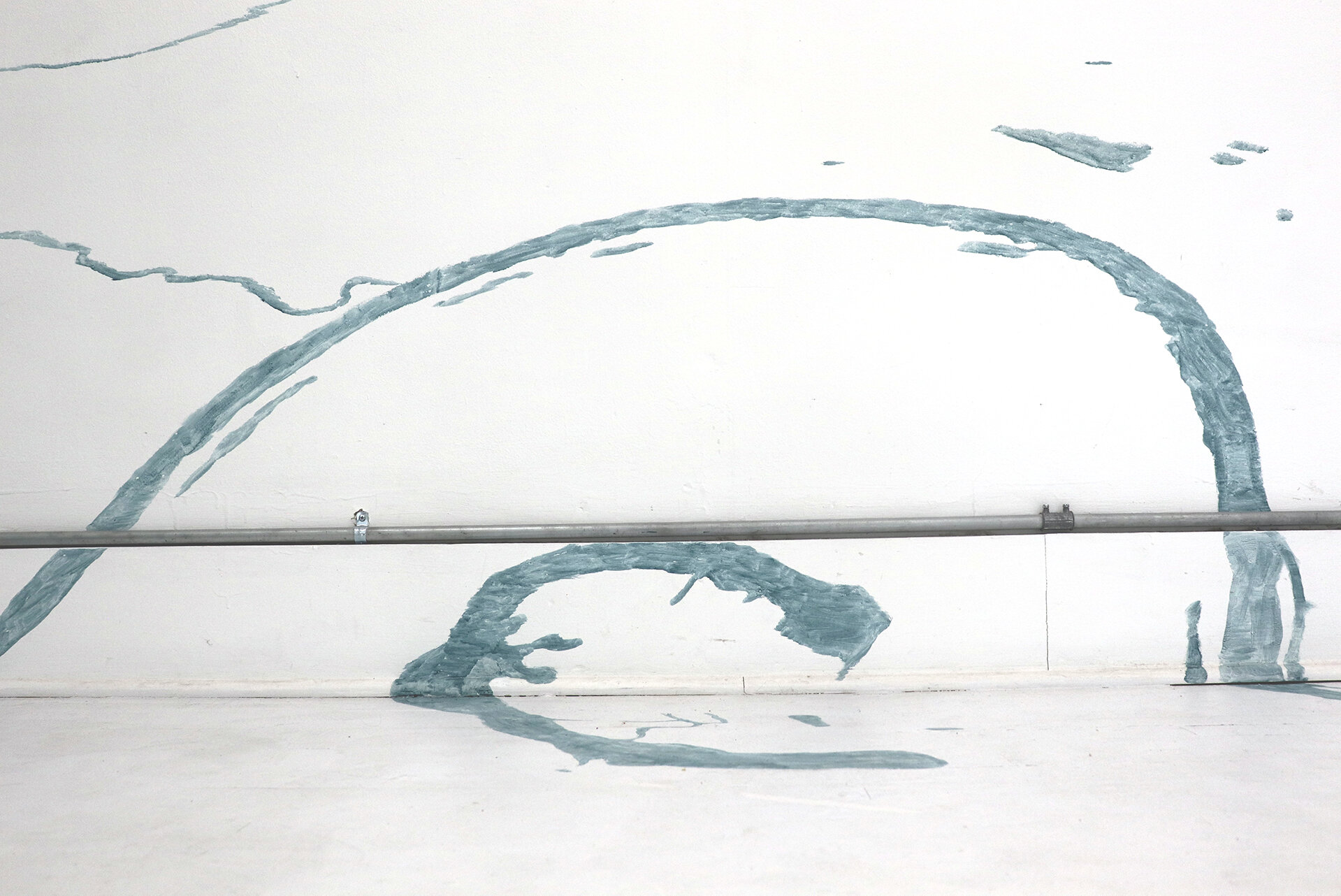
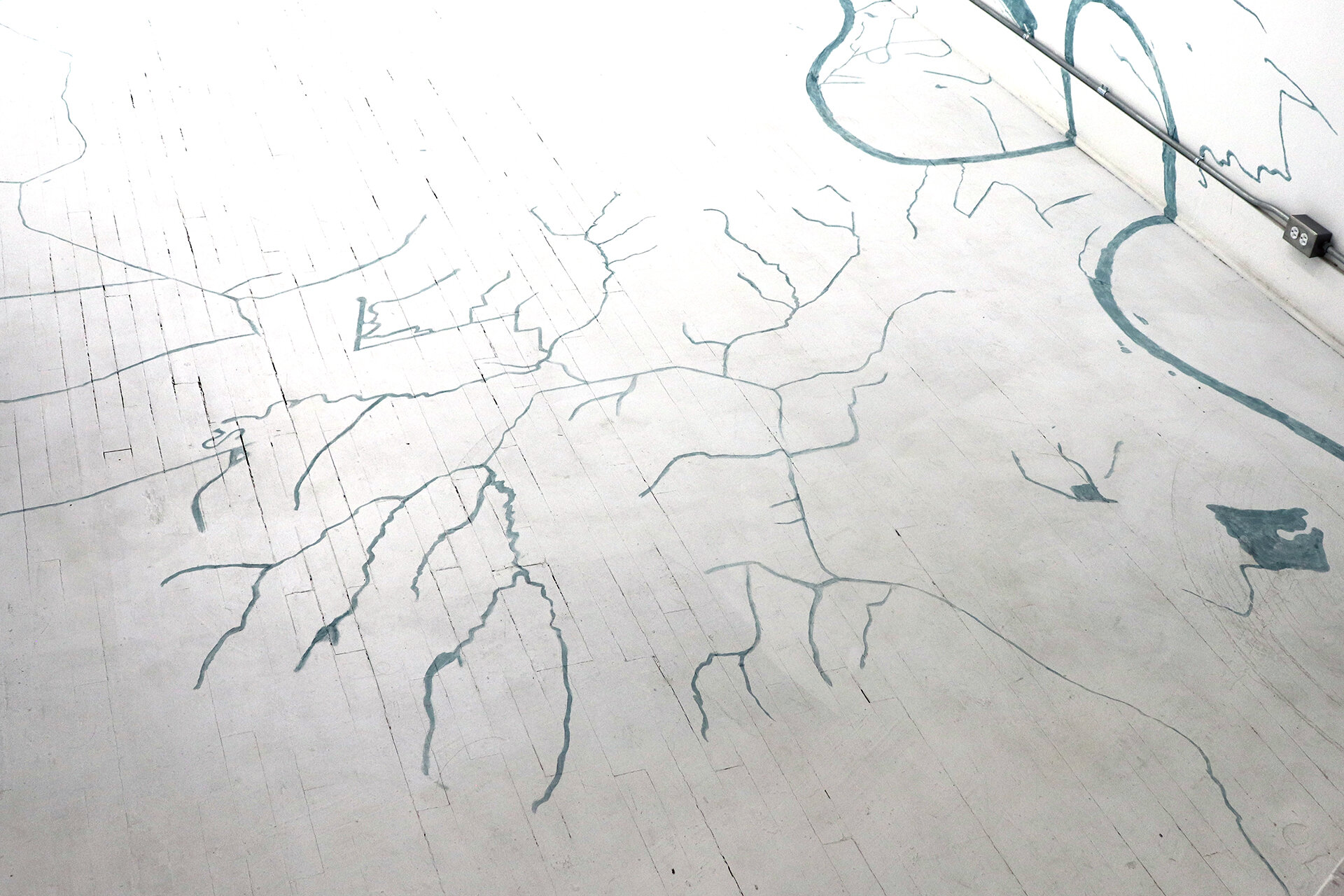
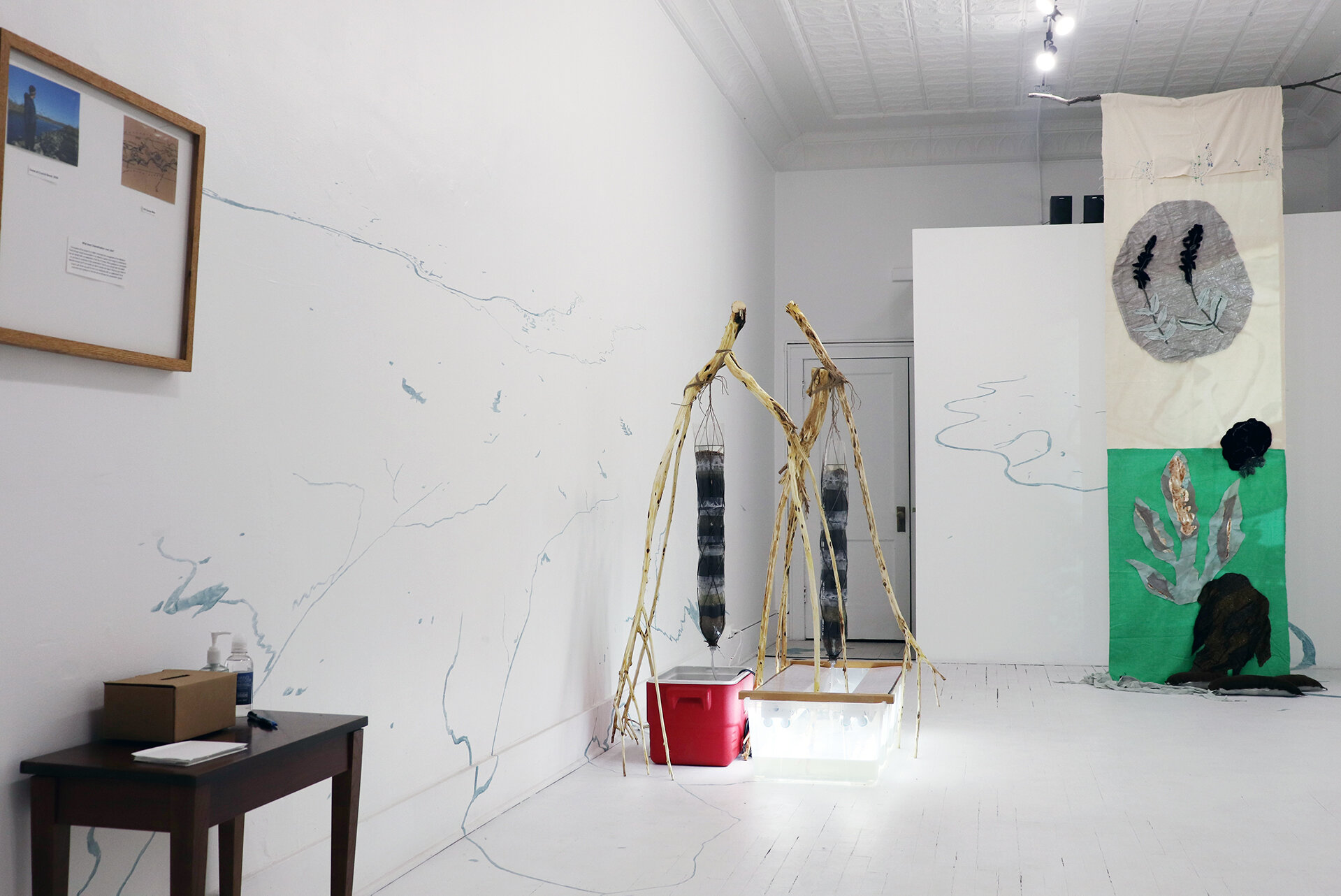
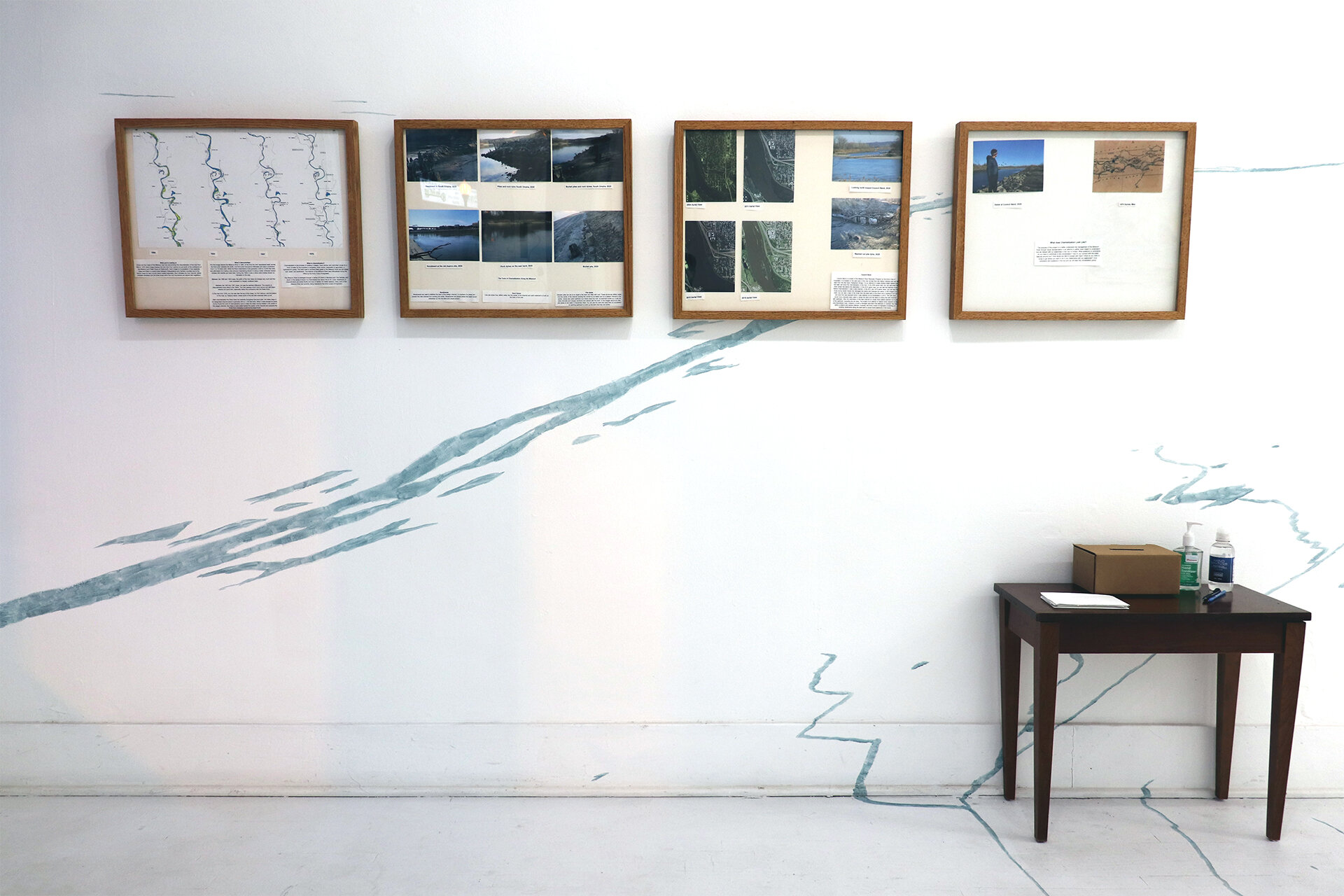
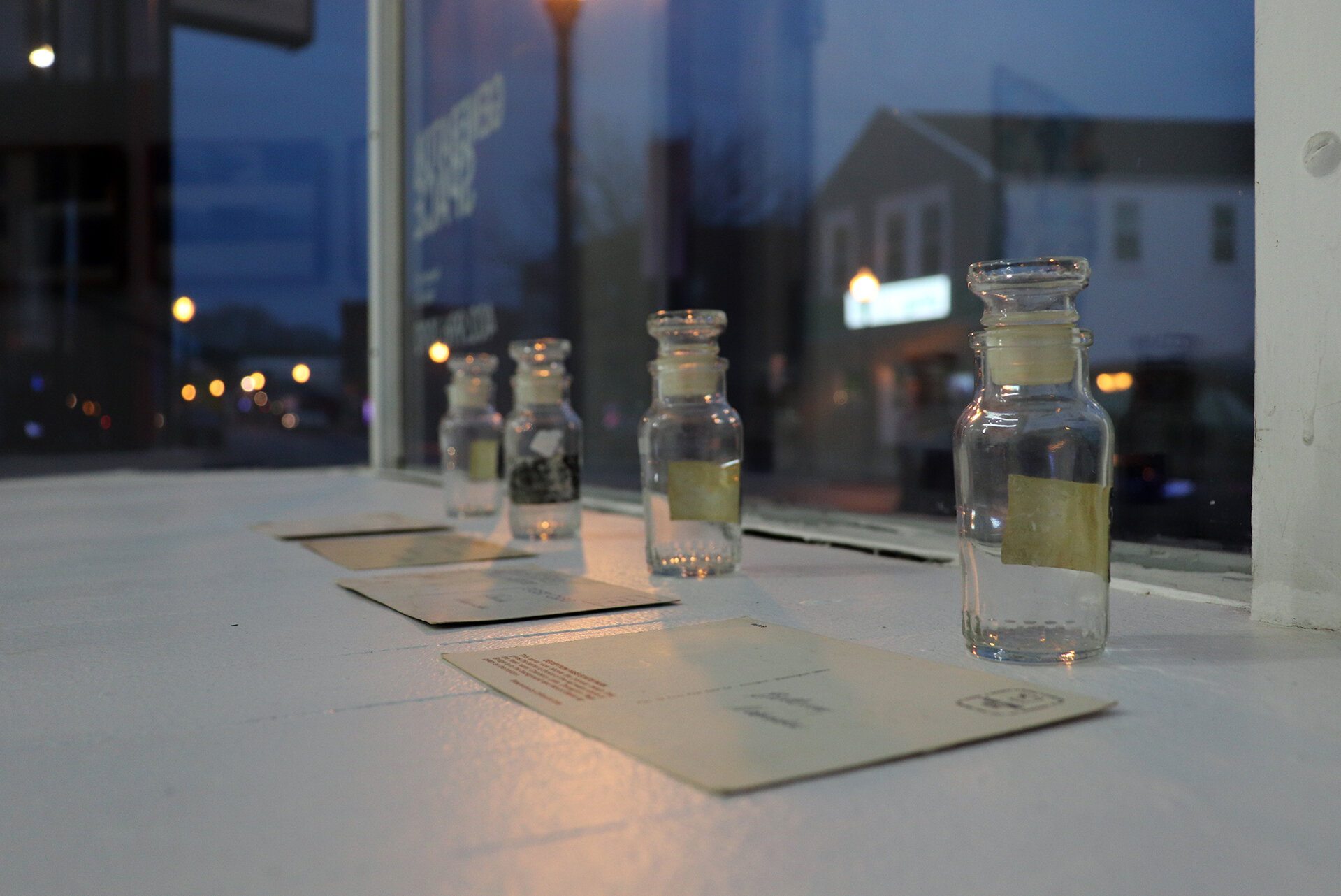
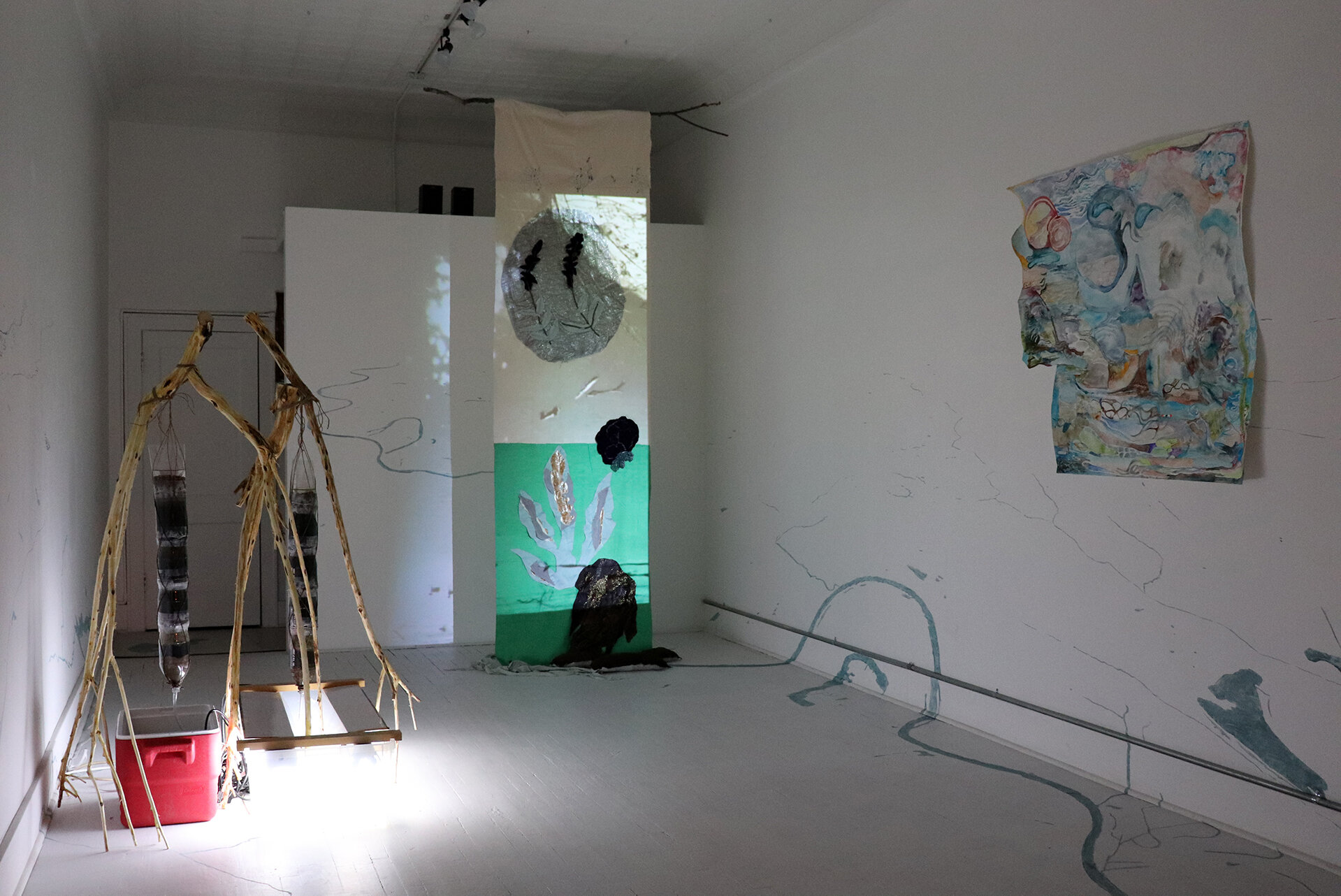
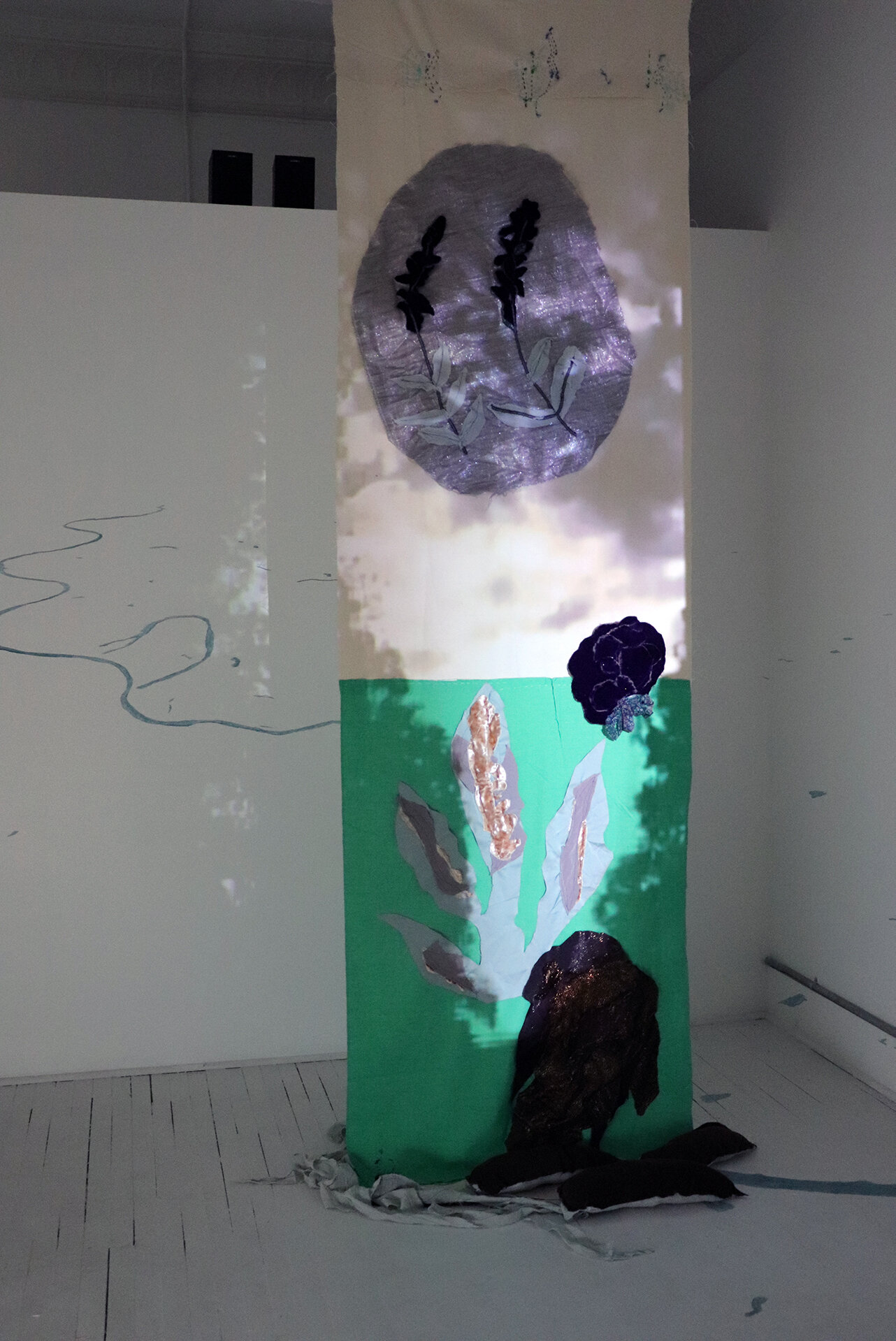
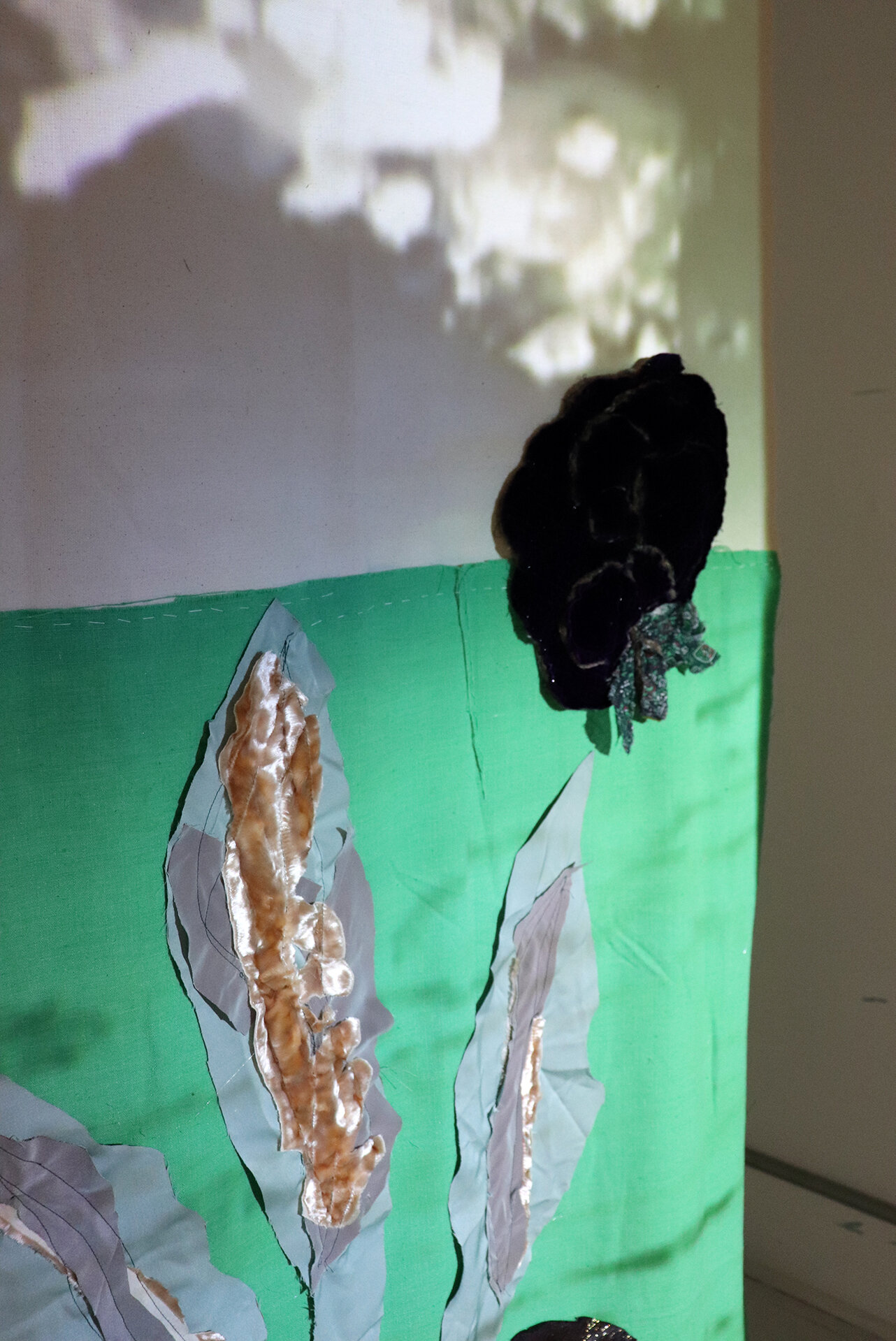
2020 Alternate Currents Working Group Material Archive
About the Artists
Corson Androski is a researcher, conservationist, software developer, and photographer/filmmaker from Hutchinson, Kansas. Their work uses the concept of care—as labor, affect, and ethic, given/received by humans and other-than-humans, individuals and systems—to consider subjects like institutional medicine alongside state ecological regulation, and beyond their respective margins, emergent communities of illness alongside informal conservation of the small, overlooked ecosystems of weeds and fungi that spring up in the seams of our patchwork flyover states.
“Maps affect how we think about and move through the world, but most of our maps today focus on showing us roads, buildings, borders, arranging them so we can measure the miles between them and tell how to navigate them, mainly by car. This map is completely useless for any of those purposes. It only shows one thing, the waterways that currently surround the gallery and the viewer - looking south, you see the Platte River confluence, along the east wall and floor is the Missouri that runs only a few blocks past that wall. It is too distorted to measure anything, but is directionally accurate and gives a vague sense of distance. This is not a map built for navigating or quantifying, but for cultivating a sense of place in and relation to our watershed, which we so easily forget, and feel little responsibility for despite our deep interdependence.
Untitled (detail), 2020, Map installation using egg tempera with natural pigments.
“This installation was inspired by a teaching exercise developed by Zoe S. Todd for her Indigenous Ecological Ways of Knowing class, which involved writing the names of water features which are important to you on sticky notes and placing them on the walls of your room in the direction of those features. This is intended not just to "sensitize participants to the waterscapes [we're] situated in," but also to "expand awareness of indigenous territories beyond the abstract to more concrete/tangible factors." Standing in the gallery and looking at the water which surrounds you, I'd invite viewers to consider what is obscured in conventional maps focused on settler-colonial infrastructure and borders. Foregrounding the watershed doesn't just help us consider our place in relation to natural features, but also to the occupied indigenous territories in our area, whose physical boundaries and cultural values are both defined by these waterways.” — Corson Androski
Travis Apel was selected as a Work In Progress Fellow through Amplify Arts. He is an Outstanding 3D Artist nominee in 2018 and 2019 through Omaha Entertainment and Arts Awards. Apel has focused his work through artist residencies at BarkerArt Hot Shops Art Center in, Kimmel Harding Nelson Arts Center in, El Museo Latino, and Mary Our Queen Catholic School. He was selected for a Friends of UNO Artslam+ presentation in 2015, and was honored through partnership with Mid-America Arts Alliance and formerly Omaha Creative Institute for a professional development fellowship in Artist INC Live Omaha in 2014. Apel is a 1994 Missouri Silver Scholarship recipient from Kansas City Art Institute. Apel has exhibited throughout the midwest and his work is represented in collections nationally.
Passage (detail), 2020, Plastic bins, local water, biochar, gravel, sand, yucca fibers, corn fibers, plastic bottles, plastic tubing, hemp twine, willow branches, cardboard, tape, water pumps, fluorescent lighting, hardware
“A functional sculpture, Passage inquires of the characteristics of both treated and untreated waters. The work featured twin gravity-fed hand built filters that were composed of local sourced and repurposed materials. I made this piece to convey an intimate sense of relationship with water in an artwork standing as a science experiment. My investigation of these two waters was much like learning about other lives. I asked the water where of their source, what obstacles they overcame, baggage carried, traumas endured. Water communicates through varying movements, holds abilities to cleanse, power to create and destroy, and to blend with other mediums. The potential for water to mix with other mediums is where the project observed chemical expressions from our life-giver. Those expressions were translated via laboratory testing.
“Treated tap water passed through Filter A. My goal was to understand the water composition analysis before and after approximately five hundred eighty hours of filtration and improve the taste of them. Our local treated water has the taste of chlorine, which is meant to chemically kill harmful bacteria. I imagined that the porosity of Filter A could retain chlorine and allow the water to pass. Chemical analysis revealed signatures that relieved my concern for the water taste and raised questions about my process for making the water healthier.
“Filter B functioned just like its twin; however, once the sixty liters of untreated Cole Creek water flowed through, she was dosed with constant ultraviolet radiation from fluorescent bulbs. The UV radiation is proven to inactivate microbial life in water. The process for the water health was identical to Filter A, but with this additional cleansing feature from Filter B. My hope was to greatly improve the quality of the tributary water, thus healing and giving back in a restorative way. A second water testing from the laboratory provided more insight and potential to enhance our awareness and foster better relationships with water.” — Travis Apel
Erin Foley and Thalia Rodgers
Erin Foley earned her BFA from the School of the Art Institute of Chicago in 2005 and MFA from the University of Southern California in 2012. Foley taught art and design + build classes for Urban Gateways and Afterschool Matters in Chicago, adjunct instructed Critical Studies and Art History at USC and Iowa Western Community College, managed Michael Rakowitz’s studio (Chicago) and assisted Andrea Zittel (Joshua Tree). In 2019 Foley earned her BSBA with an emphasis in Accounting at the University of Nebraska Omaha where she currently adjuncts a Sculpture class. She guest lectures on tax and finances at Amplify Arts and is the Finance Manager at Film Streams in Omaha. Erin’s research dealing with gender equity, climate change, and restorative justice led her to re-platform her place and in the exhibition and reallocate her stipend to Thalia Rodgers.
Thalia Rodgers is an artist based in Omaha, NE. She loves eating good food, making Trillers, and Tik Toks, tweeting, posting on her Instagram, browsing the web, crying, and laughing. She received her BFA from The University of Nebraska-Lincoln. She has won the Dan and Barbara Howard Award for Creative Achievement 2 years in a row, and the Wendy Jane Bantam Outlook Award. She wants you all have a great day and to have lots of fun :)
Refiuqa Suitiruam (dehydrated wet dream) (detail), 2020, Shrinky Dink, watercolor, gouache, colored pencil, paper
Dawaune Lamont Hayes is an inter-disciplinarian working at the intersections of performance, social design, sustainability, and journalism. Hayes is a trained dancer, working journalist, and visual artist focusing on long-term community impact. By challenging conventional spaces through nontraditional means, Hayes synthesizes supposed opposites into new forms and processes.
Dawaune collected water samples from the headwaters of the Missouri in Three Forks, Montana; one of the widest parts of the Missouri in Oacoma, South Dakota, Council Bluffs, IA and Omaha, NE. These samples were sent off for analysis to better understand our source water and estimate when and where contamination happens in the interest of cultivating more agency as a community to know and defend our Water.
Rynn Kerkhove is an urban environmental planner with backgrounds in food systems, affordable housing, and community engagement. While getting her degrees in Global Resource Systems and Urban Planning at Iowa State, she was fortunate to have many opportunities to explore the complexities of urban environments. In 2016, she was the Gerhardt intern at 1000 Friends of Oregon, writing a report on Oregon’s food system. 2018 was a busy year: Rynn interned at Iowa State Extension’s Community Visioning Program to work with small Iowa communities to plan transportation improvements; spent time during the summer working in the Cuenca, Ecuador Planning Department to gain a different perspective on planning abroad; and cofounded the Ames Tenants Union to give renters and houseless people an organized voice in her college town. Rynn currently works in the City of Omaha Planning Department.
Rynn solicited recordings taken of water in both natural and domestic spaces from Alternate Currents Group Members to compose the sound work available for download here.
Tools of Channelization at Omaha, 2020, Visual essay in four parts
Alex O’Hanlon is a community leader who is committed to supporting resident-led projects that enhance their quality of life. She’s worked as a Garden Manager for City Sprouts South where she coordinated programs, workshops, and events. Currently she works as Engagement Coordinator at One Omaha. She holds a bachelor’s degree in Philosophy/History from UNO and travels to California every fall to harvest olives. Her research excavates the history of the channelization of the Missouri River at Omaha.
Sarah Rowe is a visual and performance artist in Omaha, Nebraska. Her work addresses issues of self-identity and exploitation of natural resources. She re-imagines traditional Native American symbology to fit the narrative of our modern cultural landscape. Her work opens meaningful cross cultural dialogues by utilizing methods of painting, casting, textiles, performance, and Native American rituals in unconventional ways. Rowe is of Lakota and Ponca descent. She co founded Sweatshop Gallery and has exhibited her work nationally.
Sarah worked with Michaela Wolf and Molly Toberer to create the fabric panel. They collected video clips by Alternate Currents Working Group members to project on its surface.
Mni Wocekiya, Water Prayer (detail), 2020, Water as light on reclaimed fabric
Angie Seykora creates installation, sculpture, drawing, and painting that repurpose industrial and found materials. Through process driven, almost mechanical methods of assembly, she emphasizes accumulation and tactile materiality to produce work that references the history of minimalism, bodily systems, and "thinking through making". She received an MFA in Sculpture from Edinboro University of Pennsylvania. In 2018 Seykora was the recipient of an Unrestricted Artist Grant from Amplify Arts and in 2016, was recognized as a Distinguished Artist by the Nebraska Arts Council through the award of an Individual Artist Fellowship. In 2013, she was presented with the Outstanding Student Achievement in Contemporary Sculpture award from the International Sculpture Center, where she was selected for the Art-St-Urban Sculpture Residency in St. Urban, Switzerland. Angie Seykora is an instructor of drawing and sculpture at Creighton University. Her work is exhibited and collected on a national and international level.
Rather than a focusing on conclusive research, Angie began compiling a working document that serves as an entry point for resources regarding the earth's water supply, use, and values. Readers are encouraged to share their knowledge, thoughts, contributions and/or suggested resources in the comments section of this post. Contributions are also welcome via email (info@amplifyarts.org).
Water Declaration:
In order to create change and effectively advocate for water justice, we must come to a universal understanding of water, not only as a source of life, but as life itself. Water is autonomous, deserving of care and protection. It is not a commodity, but rather, a basic human right that may only be granted through reciprocity. The production and consumption of all goods is dependent on water supply and it is our duty to understand how all consumption impacts the longevity of a habitable planet. May our collective actions be powered through knowledge informed by research, generative conversation and communal actions making us better stewards of the land.
Indigenous Water Rights:
LINK: Assembly of First Nations - Honouring Water
Water Supply and Usage Statistics:
LINK: Where is the Earth’s water?
96.5% Oceans
2.5% Freshwater
o 68.7% Glaciers and ice caps
o 30.1% Groundwater
o 1.2% Surface/other freshwater
§ 69.0% Ground Ice and Permafrost
§ 20.9% Lakes
§ 3.8% Soil Moisture
§ 3.0% Atmosphere
§ 2.6% Swamps, Marshes
§ .49% Rivers
§ .26% Living things
0.9% Other Saline Water
LINK: EPA Drinking Water Mapping Application to Protect Source Waters
LINK: United States Bureau of Reclamation - Water Facts: Worldwide Water Supply
LINK: Water Education Foundation - Food Facts: How much water does it take to produce...?
Where does my water come from:
LINK: United States Environmental Protection Agency Water on Tap: what you need to know
Rights of Legal Personhood:
“Legal Personhood actually restores the ability for Indigenous communities and peoples to adhere to and fulfill their responsibilities of stewards and protectors of water.” — Dr. Kelsey Leonard, Water Scholar/Protector advocating for Indigenous Water Rights
LINK: Honor the Earth - Indigenous Rights: The Rights of Nature
LINK: NPR - "Should Rivers Have Same Legal Rights As Humans? A Growing Number Of Voices Say Yes"
Molly Toberer earned her MFA from University of Minnesota, School of Art and Art History (2000) and her BFA with honors from University of Kansas College of Visual Art & Design (1994). Her professional visual art research includes advocating for visual artists in the international art fair market, conducting workshops as a visual artist-educator, garnering civic public-art projects, and acting in artist-curator roles for the Department of Cultural Affairs of Los Angeles and Los Angeles World Airports [LAWA]. Toberer currently lives and works in Omaha, Nebraska restarting her sculpture practice creating hand-made objects and mediating public spaces utilizing the metaphors of industrial and repurposed materials such as metal, plastic and light that speak to human empowerment and transformation against the forces of humanity’s accelerated impact on the earth.
ArcGIS Story Map:
Ebb, Flow, and exploration of Nebraska Water Quality, 2020
https://arcg.is/11KrK9
Native Plant Doodle Animation, 2020 Collaboration with Joe Pankowski, created after identification and studying specific properties of 9 native plants that have healing properties found in NE; Yarrow, Mullein, Mint, Black Gum Tree Bark, Cat tails, Blackberry, Lavender, Sumac, Sage.
Clean Water Acts of Congress Animation, 2020 Collaboration with Evynne Doue Design, created to mimic the Start Wars Into crawl after the 2020 Earth Justice lawsuit filed on behalf of Native tribes to challenge the Trump Administration against laws that weaken the clean water protections in order to fast-track oil and gas pipelines.
The Nitrate Eye Blinks, 2020 Collaboration with Nash Bellows, collage animated graphic, mp4 created after researching nanosensors that can identify nitrate pollution levels within drinking water, ground water, and wells. Image uses digital collage of cover crops, nanosensor diagrams, and microscopic photos of nitrates in water particles.
Ebb, Flow closing event, with a final prayer for water highlighting ACWG 2020 research from the past year, AR Projection Mapping on the facade of Amplify’s Generator Space in Omaha, NE, Production by Molly Toberer Studio featuring collaborative animation with Nash Bellows, Evynne Doue, and Joe Pankowski.
Alternate Currents Working Group Panel Discussion
On November 19th, 2020 Alternate Currents Working Group Members sat down for a virtual conversation, moderated by Annika Johnson, to discuss how culture stands up for nature, and water, more specifically, by centering concepts of reciprocity, care, and ecological justice in individual and collective creative practice.

